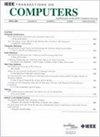ML-PTA: A Two-Stage ML-Enhanced Framework for Accelerating Nonlinear DC Circuit Simulation With Pseudo-Transient Analysis
IF 3.8
2区 计算机科学
Q2 COMPUTER SCIENCE, HARDWARE & ARCHITECTURE
引用次数: 0
Abstract
Direct current (DC) analysis lies at the heart of integrated circuit design in seeking DC operating points. Although pseudo-transient analysis (PTA) methods have been widely used in DC analysis in both industry and academia, their initial parameters and stepping strategy require expert knowledge and labor tuning to deliver efficient performance, which hinders their further applications. In this paper, we leverage the latest advancements in machine learning to deploy PTA with more efficient setups for different problems. More specifically, active learning, which automatically draws knowledge from other circuits, is used to provide suitable initial parameters for PTA solver, and then calibrate on-the-fly to further accelerate the simulation process using TD3-based reinforcement learning (RL). To expedite model convergence, we introduce dual agents and a public sampling buffer in our RL method to enhance sample utilization. To further improve the learning efficiency of the RL agent, we incorporate imitation learning to improve reward function and introduce supervised learning to provide a better dual-agent rotation strategy. We make the proposed algorithm a general out-of-the-box SPICE-like solver and assess it on a variety of circuits, demonstrating up to 3.10ML-PTA:用伪瞬态分析加速非线性直流电路仿真的两阶段ml增强框架
在寻找直流工作点时,直流分析是集成电路设计的核心。虽然伪瞬态分析(PTA)方法在工业界和学术界广泛应用于直流分析,但其初始参数和步进策略需要专家知识和人工调整才能提供有效的性能,这阻碍了其进一步应用。在本文中,我们利用机器学习的最新进展,为不同的问题部署更有效的PTA设置。更具体地说,主动学习可以自动从其他电路中获取知识,为PTA求解器提供合适的初始参数,然后使用基于td3的强化学习(RL)进行实时校准,进一步加速仿真过程。为了加速模型收敛,我们在RL方法中引入了双重代理和公共采样缓冲区,以提高样本利用率。为了进一步提高RL智能体的学习效率,我们结合模仿学习来改进奖励函数,并引入监督学习来提供更好的双智能体轮换策略。我们将提出的算法作为一种通用的开箱式spice求解器,并在各种电路上对其进行评估,结果表明,初始阶段的NR迭代减少了3.10$\boldsymbol\times$, RL阶段的NR迭代减少了285.71$\boldsymbol\times$。
本文章由计算机程序翻译,如有差异,请以英文原文为准。
求助全文
约1分钟内获得全文
求助全文
来源期刊

IEEE Transactions on Computers
工程技术-工程:电子与电气
CiteScore
6.60
自引率
5.40%
发文量
199
审稿时长
6.0 months
期刊介绍:
The IEEE Transactions on Computers is a monthly publication with a wide distribution to researchers, developers, technical managers, and educators in the computer field. It publishes papers on research in areas of current interest to the readers. These areas include, but are not limited to, the following: a) computer organizations and architectures; b) operating systems, software systems, and communication protocols; c) real-time systems and embedded systems; d) digital devices, computer components, and interconnection networks; e) specification, design, prototyping, and testing methods and tools; f) performance, fault tolerance, reliability, security, and testability; g) case studies and experimental and theoretical evaluations; and h) new and important applications and trends.
 求助内容:
求助内容: 应助结果提醒方式:
应助结果提醒方式:


